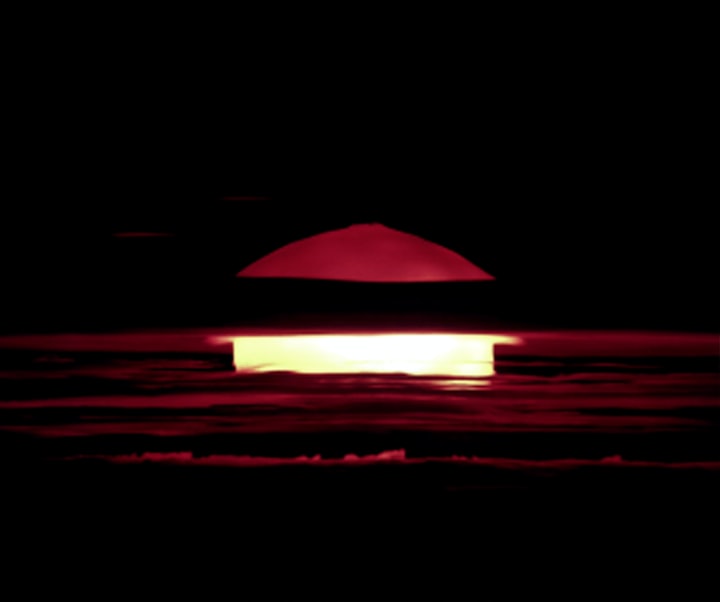The World That Came After
A new world emerged in the wake of WWII

Wars are transformative events, but because of the nature of warfare prior to the twentieth century, their consequences were generally localized. The thirty-two years war, for instance, involved many combatants, but Eastern and Central Europe experienced the bulk of the consequences. World War II, on the other hand, was a massive global conflict, a war of such magnitude that the consequences carried worldwide significance and would vastly alter the course of human history.
With two theaters of war, Europe and the Pacific, World War II had a profound and devastating effect on a vast number of people from numerous cultures. Between 50 and 60 million people - other sources place the death toll considerably higher - were killed, and many were displaced. Those deaths and displacements alone represent massive change, but the cost and consequences of the war should not only be measured in depopulation, casualties, or destruction. Many of the changes were social in nature. In the United States, for example, legislation protecting the rights of returning Veterans would not only alter the process of military demobilization but would change the socio-economic landscape of American society.
Demobilization, the reintegration of soldiers into normal life, is far from simple and poses an extreme danger to the stability of the society to which they are returning. In the words of Commander William H. Atherton, returning soldiers “[may be] a potent force for good or evil.” The Roosevelt Administration also understood the profound impact returning soldiers could have. In his State of the Union address, FDR opined, “People who are hungry and out of a job are the stuff dictatorships are made of.” These were not the mere panic-inducing declarations of fear-mongers. Instead, they were assertions supported by historical events.

In Germany at the end of World War I, returning Veterans were not greeted as heroes. Their return was a dogged march of defeat. And because of this defeat, the German Weimars, themselves crippled by the Allied victory and the harsh terms of the Treaty of Versailles, found their wealth dwindling. Germany, like other nations of the era, had to contend with a collapsing economy. But whether the soldiers’ mistreatment was the result of German economic difficulties or the result of national resentment is moot. The lack of care they received had an obvious denigrating effect. German soldiers, men who should have been rewarded for faithful service, were instead left to starve or freeze to death. Their circumstances bred bitterness, anger, and hatred. Adolf Hitler, himself a decorated veteran of the First World War, was among the discarded. He used the bitterness and resentment of his peers to climb to a position of power, and it was this position of power that allowed him to assume autocratic control of the nation.
While there are more events to support the wisdom of the G.I. Bill, such as the Pension Riots following the Spanish-American war, the events of Post-WWI Germany were arguably more significant. World War II era American leaders understood that the mistreated Veteran presented a threat to national order, so they were left with some hard questions to answer. What could the government do so Veterans would return to their normal lives without incident or without engendering bitterness? Roosevelt addressed the problem with his usual pragmatism, saying, “We have taught our youth how to wage war; we must also teach them how to live useful and happy lives in freedom, justice, and decency.” The G.I. Bill was the means to that education.
The G.I. Bill outlined the rights of returning Veterans. Every Veteran, according to the Bill, was entitled to a job, an education, and other rewards, such as no down payment mortgages. This meant that for the first time, the expectation of homeownership and a college education were no longer just for the elite. The number of American homeowners increased, up from 40 to 60 percent between 1940 and 1960, and the education opportunities available led to better job skills, which increased the national income. The better job stability and increase in wages were correlated by an increased birth rate. Children, multiple children, became more affordable. Suburban living, brought to prominence by the expansion of commuter rails, became the cradle of homeownership.

The suburbs were separate from urban centers of industry and because suburbanites had a longer distance to travel, the personal automobile gained prominence. The commuter rail also maintained its prominence, but the freedom and privacy of the personal automobile was appealing to many. Expanded automobile ownership presented a need for more roads, which created more work, which benefited the economy.
While these additions to the infrastructure were occurring, the birth rate continued to rise. More children meant more schools. More schools created more jobs, creating further benefit to the economy. The economy, the birth rate, the job rate were all on the rise after World War. Americans were becoming wealthier and the divide was no longer just between rich and poor; an American middle class began to emerge. America was well on its way to becoming the wealthiest nation in the world.
All the while, the population continued to soar, and Americans began to require more services and resources, which came to include newer forms of sustenance. Electricity, once a novelty, then luxury, soon became a necessity. But with power demands escalating, the land of abundance needed to locate an energy source of equal abundance. An alternative to oil and coal, atomic energy was sold as a limitless energy source. It was also a consequence, seen as either benign or malignant depending on the source, of the Second World War.

Although it seems counterintuitive, nuclear energy was a byproduct of nuclear weapons research. It was not until after the war that the United States began courting the prospect of nuclear energy. In fact, in the year following the nuclear strike on Hiroshima, the Atomic Energy Act of 1946 was passed with the goal of regulating the production of atomic energy and nuclear technology. At that point, atomic energy was still in its earliest stages. It was not until December of 1951 that the first nuclear reactor was activated and the power industry was forever changed.
The harnessing of nuclear power is an important consequence of World War II, one with many significant consequences of its own. With each nuclear reaction, waste materials are created, and those waste materials are highly radioactive. As a matter of fact, the entire process of nuclear fission is volatile. In 1986, the Russian nuclear reactor Chernobyl went into a catastrophic meltdown. The impact on the environment surrounding the reactor was profound. A radioactive fallout perimeter was created by the event, rendering the land in and around the site uninhabitable. The outlying areas, such as the city of Kiev, have also demonstrated the long-term deleterious effects of the meltdown. Kiev’s children present with birth defects and the incidences of thyroid cancer are too high to be considered coincidental.
Of course, this disaster could be attributed to Russian incompetence, but a similar, less devastating event occurred in the United States at the Three Mile Island site in March of 1979. In that instance, a nuclear reactor also reached a critical state, but never quite went into meltdown – or so the official story goes. Again, this incident could be attributed to incompetence, but it also could be contributed to the sheer ignorance of humanity. The intent with nuclear energy and nuclear weapons is to harness the raw power of the atom, but any fool in a hurricane can demonstrate the ineffectiveness of exerting control over the powers of nature. When you control - or pretend to control - a power as intense and uncontrollable as nuclear energy, the results of a perceived mastery can be disastrous. As an example, consider the attacks on Hiroshima and Nagasaki in summer 1945.

Some historians will assume the position that the creation of the atomic bomb was necessary for American victory in World War II. The American nuclear program began in direct response to the German nuclear program. However, it is incorrect to assume Hitler had an atomic bomb or that he would have used it to launch a nuclear strike against his enemies. According to record, Hitler never attained nuclear weapons, and if he secretly acquired them, he never deployed them. The Nazis scattered in defeat before the opportunity arose for Americans to deploy their new weapon. The American military, however, was not content to rest on their laurels. A weapon is only effective once its power has been demonstrated, and demonstrated it was, effectively shattering the balance of power and placing the United States in an unchallenged position of power.
Hiroshima and Nagasaki, given their locations on Japan’s southernmost islands and their large civilian populations, were not ideal targets for a surgical military attack, but the two areas had been groomed for atomic deployment. In early August 1945, the United States, under the auspices that a show of strength would force the Japanese to surrender, launched two separate attacks, first against Hiroshima and then, three days later, against Nagasaki. For the crews of The Enola Gay and Bock’s Car, their separate bombing runs lasted mere minutes, but the impact of their mission would carry into the modern era.
Among the structures located near the hypocenter of the explosion, was a school filled with teachers and students. Before their eyes could even register the blinding flash, they were incinerated. Anyone within a mile of the blast area would have been instantly incinerated, but further out the deaths would have been slower, much more agonizing. In the long months that followed, the Hiroshima death toll would rise to an astounding 140,000 soldiers and civilians, considerably higher than the American death toll during the First World War. Combined with the estimated deaths in Nagasaki, around 75,000, the figure climbs remarkably close to half of the total American deaths in World War II. Alone, those deaths are a profound consequence of the attacks, but the consequences are actually more extreme. Nuclear warfare carries with it consequences even more profound than the wholesale slaughter of women and children.
For the Japanese hibukusha, those who survived the attacks, the event would be carried with them for the rest of their lives, both mentally and physically. Radiation has profound instantaneous and long-term effects. The effect of radiation on DNA is so profound, in fact, that it causes mutation in the offspring of exposed individuals. Women do not even have to be pregnant at the time of exposure to produce mutated offspring. For men the effect is similar. If not rendered sterile from exposure, males, through their zygotes, can transmit mutated strains of DNA to their offspring.

Radiation is not some nuclear boogeyman. In fact, humans are exposed to radiation within tolerable levels on a daily basis. But nuclear reactions produce tremendous amounts of radioactivity, deadly amounts. Hiroshima and Nagasaki, the Chernobyl meltdown, Three Mile Island, have already demonstrated profound effects on the human genome. These were all profound events in human history, events that all spun from the same source.
Of course, certain events can be declared more consequential than others, but this does not necessarily mean the assessment is true. Like all events in history, World War II was a thread in a web, a web that is still incomplete. Each of the events listed here, the consequences of the Second World War, had some influence or were influenced by the others. The connections are not always readily apparent, but they do exist.
With the knowledge that the Nazis had an accelerated nuclear program, the United States, in turn, accelerated its nuclear program. The Manhattan Project led to the development of a nuclear bomb, a bomb that was used not on the Germans, but the Japanese. Nuclear weapons guided science to a massive energy source, atomic energy. Atomic energy answered a growing energy need, an energy need created by a booming population, a booming population beholden, in part, to the G.I. Bill of Rights. Each of these events impacted or was derived from the others. They also impacted and were derived from other events and each consequence had its own subsequent consequences.
The transformative nature of war is owed to a number of factors. Wars carry heavy death tolls, ending individual lives and shattering the lives connected to those lives. Wars are responsible for massive displacement and massive displacement creates both cultural conflict and cultural concord. Wars have a profound economic effect, leading to economic growth, economic stagnation, or economic decline. Wars give rise to new technology, technology that either improves life or threatens the existence of life.

Wars by nature are events of extreme consequence, altering the procession of human history. World War II is unique in that it not only determined the procession of history, but through the introduction of a profoundly powerful new weapon and a subsequent energy source as beneficial as it is deadly, it gave us the means to destroy ourselves. For the first time, humans possessed the means to bring the procession of history to a screaming halt.
About the Creator
Mack Devlin
Writer, educator, and follower of Christ. Passionate about social justice. Living with a disability has taught me that knowledge is strength.
We are curators of emotions, explorers of the human psyche, and custodians of the narrative.






Comments
There are no comments for this story
Be the first to respond and start the conversation.